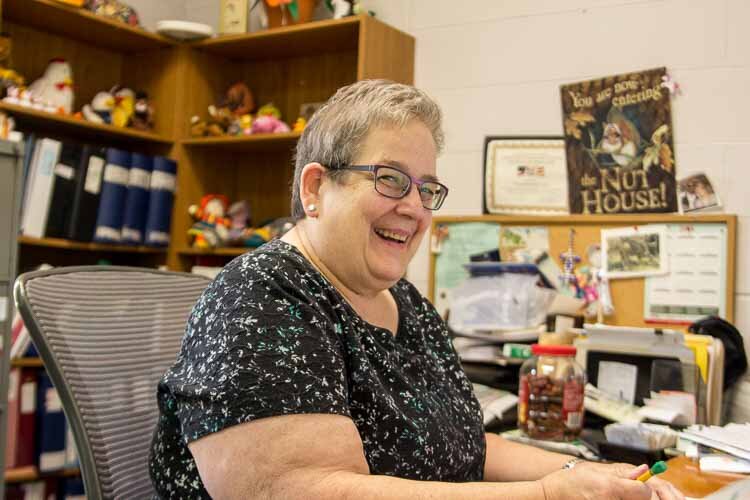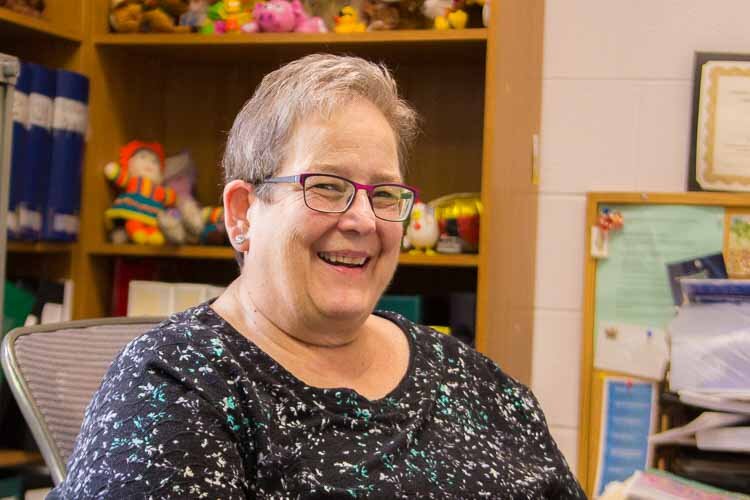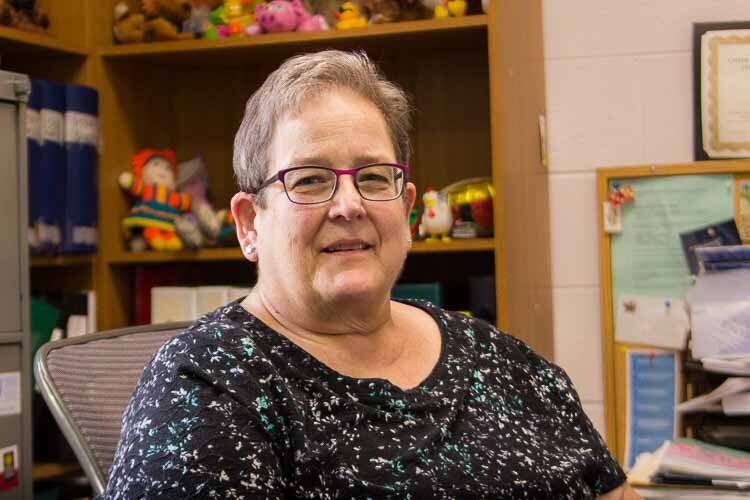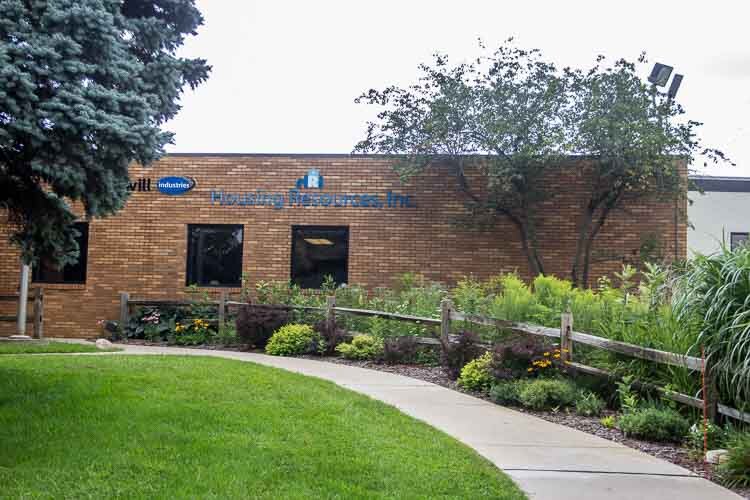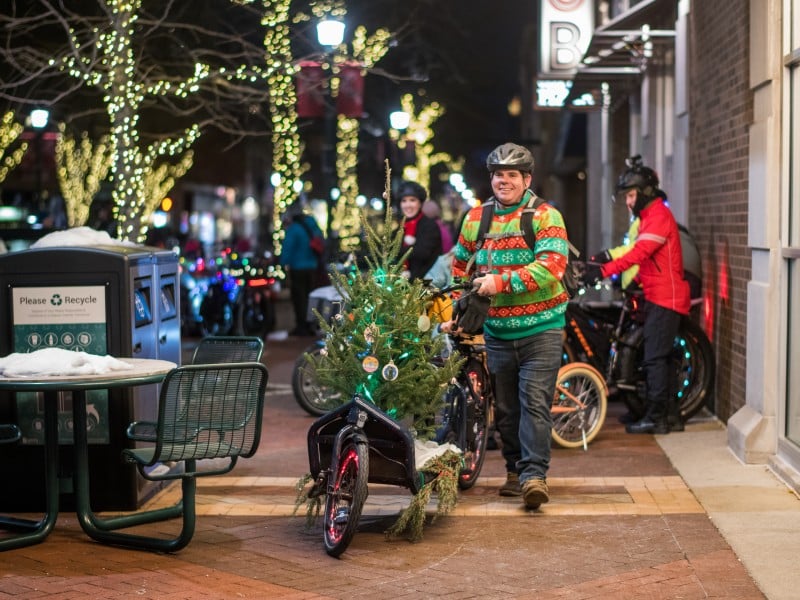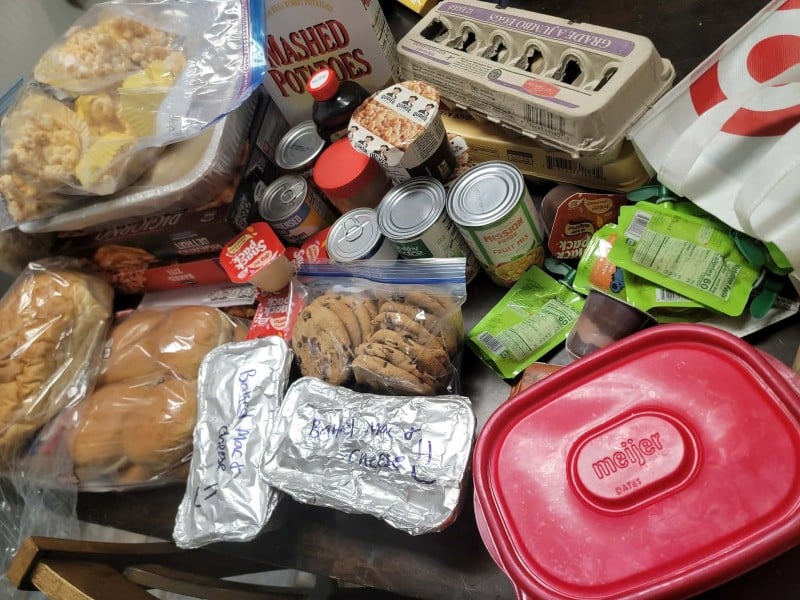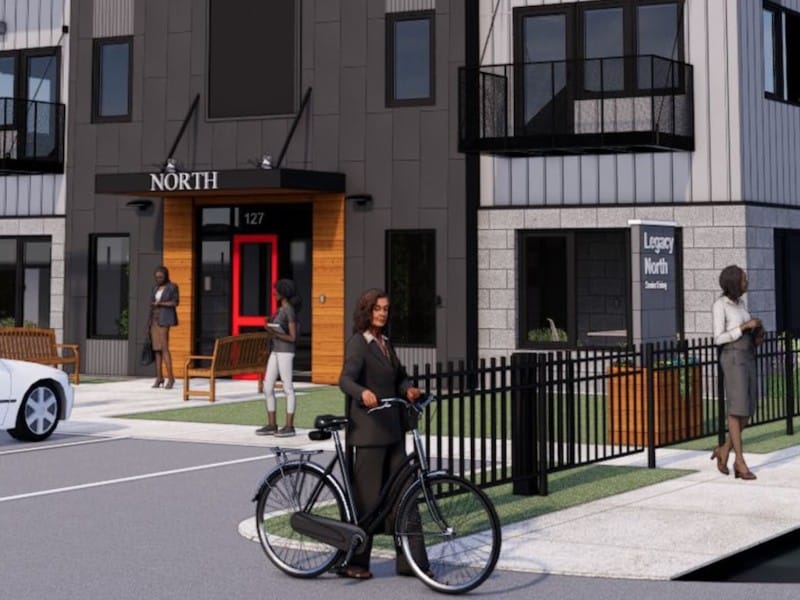Lack of affordable housing means more are living in the woods and encampments. What can be done?
Affordable housing is being built, but the progress is slow. Two agency executive directors talk about possibilities for getting work done as Second Wave explores common concerns and solutions to those issues in rural and urban Kalamazoo county.
Often in the local and national news, when issues in rural communities come up, we are treated to a focus on cultural/political divisions. Rarely do we get stories on people trying to solve issues in rural communities — if we get coverage of rural communities at all. We’ve been thinking about the possibility that both rural and urban areas experience the same problems. And both might benefit by discussing solutions being explored in their unique communities. As part of this series, Second Wave is holding discussions between people working on issues affecting both rural and urban Kalamazoo County. This is the first part in the series and focuses on the lack of affordable housing, an issue identified in our listening session conducted as part of the series.
We set up an online meeting with Mary Gustas and Michelle Davis. At the start, they jumped right to the matter at hand.
“Let’s build some housing, Mary!” Davis, executive director of Housing Resources Inc., says. “I’ve been looking out in Comstock, and your (township) board better give up some space…”
Gustas, executive director of the Comstock Community Center, laughs. “I have a couple of board members on the township board who said they’re ‘not going to put up any subsidized housing or tiny houses on our property.’ I’m going, oh my god. You have no idea. The number of people that are living in the woods….”
There is a crisis in Kalamazoo County. People are living in the woods of rural Comstock, homeless encampments are still ongoing in the margins of the City of Kalamazoo. According to the Kalamazoo County Continuum of Care, the county’s rental units have a 97% occupancy rate and those that are open aren’t affordable for people on the verge of homelessness.
COVID-19 pushed the housing crisis into an emergency situation and now the Delta variant and approaching winter are sure to extend the crisis.
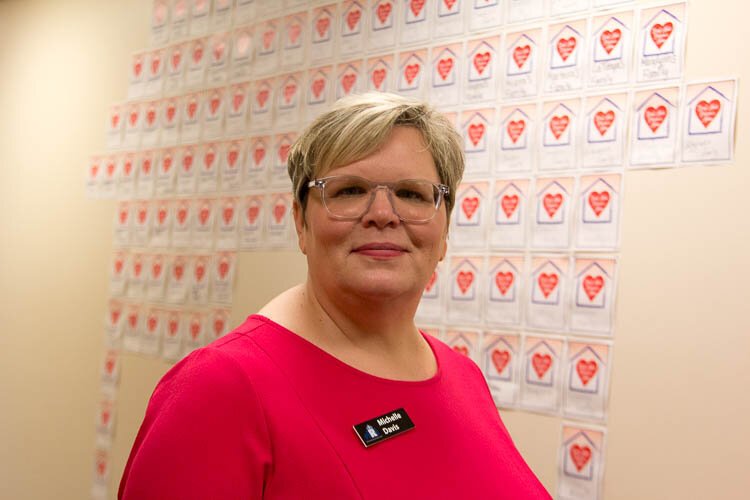
Affordable housing is being built, but the progress is slow. It took years for The Creamery, with its 48 units — 15 priced for low-income tenants — to reach completion. The new Edison neighborhood building is “a wonderful thing, but what folks aren’t saying is that there are 400 applications for that property. We need four more of them,” Davis says. “We have to have solutions that don’t take that long.”
Keeping people housed is at the top of priorities for Davis and Gustas, but that’s tied to building, or finding, homes for people who’d otherwise end up in the woods and camps.
Rural/Urban conversation
Is the housing crisis different in the City of Kalamazoo than in smaller communities like Comstock Township?
Sometimes, cultural/political issues are unavoidable, especially when elected officials are involved.
“What are we going to do about those council members?” Davis asks about the township board members blocking new affordable housing developments.
Gustas replies, “Well, I’m only one vote in Comstock, so….”
There are differing attitudes between the city and communities like Comstock, Gustas says. “So, when we were trying to get the (Kalamazoo County “Homes For All”) housing millage passed countywide, we presented a proposal for the Comstock board to approve, which allowed for non-discrimination for rental areas.”
This proposal went before the township in 2020, before the November elections. “It was just asking that landlords in Comstock Township to not discriminate. It (the board) still has not done anything.”
Gustas continues. “It’s simple. It’s not asking for any money. It’s not asking for any major compliance. It’s just making a statement, we just want you to be supportive of individuals who need housing.”
Davis and Gustas go into various frustrations getting in the way of dealing with the affordable housing crisis: Suspected racism, officials who’d rather land went toward industrial or commercial development, landlords refusing rent payment if it comes from HRI.
HRI is the county disbursement organization for relief funds like the COVID Emergency Rental Assistance (CERA). Both tenants and landlords benefit from CERA, since either one can apply for help paying, or receiving, back rent.
Landlords are also struggling — yet they won’t accept relief payments of back rent?
“No, they won’t take it,” Davis says. “You’re (the landlord) getting your rent paid, free and clear, but you won’t take it. You just want those people gone.”
Are issues like these more common in small towns like Comstock than in the city of Kalamazoo?
“I don’t know if that’s so different,” Davis says.
Legal aid for tenants
In a separate interview, attorney Donald Roberts tells of his reactions to some eviction cases he’s been seeing, that make him think, “That’s interesting. That’s new.”
Some cases have been making him think, “There’s been an attempt to try to circumvent the CDC moratorium, yeah.”
There are loopholes in the eviction moratorium, loopholes some landlords are trying to squeeze through. Some cases involve rural tenants. “It seems to be in mobile home parks, primarily,” Roberts says.
Roberts is managing attorney for the Kalamazoo office of Legal Aid of Western Michigan. The non-profit covers the counties of Kalamazoo, Cass, St. Joseph, and Van Buren. They provide legal help for people living in or near poverty, including eviction cases.
In the past year and a half, Roberts has not been seeing “as many evictions for non-payment of rent, because of the moratorium — or, moratoriums.” (After the moratorium’s brief end, the CDC extended the eviction moratorium for counties with “heightened levels of community transmission” which includes Kalamazoo.)
However, he has been seeing “an uptick” in other types of termination cases. The CDC allows evictions in some cases, such as claims that the tenant has made the property a health hazard, Roberts says.
For example, “let’s say the landlord has failed to make repairs, there’s a leaky roof or leaky floor or hole in the floor… And there’s some condition that’s caused some mold or deterioration. And they actually blame the tenant for that. They say it’s because of the tenant’s behavior there’s a health hazard in the property. So they then can evict them sooner.”
Because of his work defending tenants, Roberts has a bias, he admits. “There are tenants obviously who may have a hoarding problem or have excessive pets, or some other lifestyle issues that can cause a property to be diminished.”
He says with a laugh, “I can’t prove what’s in people’s heart. But we would not ordinarily be bringing those kinds of cases onto these circumstances…. The landlord always says it’s the tenant’s fault, but it’s also the landlord’s fault. That’s my bias showing through.”
Legal Aid of Western Michigan has been a part of eviction diversion in the county for 15 years. With HRI, United Way of Battle Creek and Kalamazoo Region, and other organizations, they’ve been “working together, putting money together, so people’s rent was being paid to avoid eviction.”
Legal Aid, as well as the attorney for HRI, Kelly Gray, “have a presence at the court, and the court has to tell (tenants in eviction cases) that lawyers are available to help them. That’s one of the reasons we’ve been successful in Kalamazoo, simply because we have the infrastructure set up to do that.”
In some ways, he adds, Kalamazoo County is doing better in the COVID-era housing crisis than other places. “Kalamazoo has done a really good job, is the fourth-best in the state in making sure that people’s rent gets paid through the CERA program.” He credits HRI for getting the funds out.
“As opposed to other states — I hear horror stories on the news where this money sits and is not going out. We have money available” in Kalamazoo.
Getting the CERA word out
In the meeting with Gustas, Davis outlines the stats:
“Kalamazoo county is currently fourth in the state for processing (CERA) applications, which would give you some idea of those who have applied in terms of facing homelessness. We’ve had about 2,500 applications come through, and we’ve put out $7.5 million (in rent relief funds),” Davis says.
The numbers show the increased stress put on the system. “In July alone we’ve put out $1.6 million in rental assistance in just that program, and before COVID, HRI’s entire budget for assistance in one year was $1.4 million…. Our operating budget has gone from about $3.4 – $3.6 million, to $23 million. That’s how great the need is.”
CERA has helped keep 2,500 households in the county from being put out onto the street. “What we don’t know is who hasn’t applied” for help, Davis says.
With the CERA program, people can receive up to 12 months of back rent, get help with utilities and internet access. “While they have accumulated a lot of debt because of COVID, they now have the ability to wipe that debt clean. And this is unheard of to have that much debt removed if they have it, and get a fresh start.”
HRI is getting the word out through outreach events and application drives. For those who don’t have internet, HRI can help with applying, Davis says.
They’re also reaching out to landlords using mailing lists — “But I don’t think we have one (list of landlords) for Comstock, but if you can help us with that, Mary…”
Gustas laughs. “I don’t think that exists!”
How do we get through these mindsets?
Davis says that in other communities around the county, “I think some things are different. In Vicksburg for example, they’re pretty open to really creative solutions for affordable housing. And would probably welcome development — you get into land and where could (new housing) be, but they’re pretty open to the conversation.”
Davis says she suspects that “Comstock is more apt to go for manufacturing-building than housing-building.”
“You’re right, and they have. The township itself owns a lot of property, and some of it is landlocked,” Gustas says.
“I talked with the USDA because we are a rural community, and I can get funding from them for affordable housing,” Gustas says. “And in the past, the township has been more than happy to give me the property that they don’t want to use. But now they’re saying, ‘Oh, you’re landlocked, there’s no way to get a sewer system in there.'”
Davis says, “We have a private developer who was looking at Comstock, and he was ready to go. But can’t find anywhere to do it.”
Gustas says, “Oh, I got possibilities in Galesburg! Big property, I think 30 to 40 acres, that would be good for a housing development. I — I get my nose into everybody’s business!” she says, laughing.
She continues, “I called Galesburg and asked them if they had any property, because they’re a rural community as well, and they said we might be able to do a joint development project with a private developer and the USDA. And Galesburg’s got a water and sewer system, so if in fact, we were able to access that, that would solve a huge problem….”
“That’s intriguing,” Davis says. “I only need about 2.5 acres for 100 units — that’s what I need.”
“Ooh! We need to talk, Michelle.” Gustas laughs. “Honestly, I think Galesburg would be a wonderful location. Comstock’s more interested in economic development, downtown economic development right now. I’m not sure how they think that they’re going to develop the downtown of Comstock, but they can dream I guess.”
Edison/Comstock
Comstock is considered rural, but it’s only about 2.5 miles east of the City of Kalamazoo’s densely-populated neighborhood of Edison.
Tammy Taylor, executive director of the Edison Neighborhood Association, says they have the same problems as Comstock, and “I believe it’s the same all over the nation. People have already been living paycheck to paycheck, and then when COVID hit, folks lost their jobs and lost their rent payments.”
Taylor says she gets calls all the time from people “who are in dire straits trying to figure out where their next roof is going to be.” She sends them to HRI and hopes they can get connected with a new place to stay or funds to keep their home if they have one.
“There just aren’t enough affordable apartments out there for the folks who need them,” she says.
Is there space in Edison for affordable housing?
Taylor says she hears some of the same responses to housing demands in Edison as there are in Comstock — that business should get priority for vacant land or buildings. “I get that,” she says.
But in Edison there are developers “making magic happen.”
Taylor points out that the LIFT Foundation has been looking at property on Stockbridge, and Hollander Development, who is behind The Creamery project, is looking at property on East Alcott.
Because it can take years for doors to open to new tenants, Taylor says to “share, share, share” the information on CERA funding. She’s been telling Edison residents to find neighbors on the verge of homelessness, “and plug them into the information they need.”
Conestoga huts? Military barracks?
Gustas and Davis run through other options:
What about vacant buildings, houses? Gustas says she sees many around the county, but “most of them are uninhabitable.”
Much of the time the costs to make a building or house habitable are prohibitive, Davis says, “anywhere from $75,000 to $150,000 to renovate it. And so then, even if you renovate it and you wanted to operate it or rent it out, if you get financing… or even to sell it, you’re at a loss to get started. It’s not worth what you’re putting into it.”
Their thoughts turn to what to do with unhoused people before the snow falls. The Gospel Mission will finish its expansion by October, so there should be more beds there — unless the Delta variant makes such shelters hazardous.
Other groups for the homeless are building “Conestoga huts,” but Davis says that they would be little better than tents in the winter, and don’t address the problems of the homeless camps.
Gustas says maybe National Guard barracks at Fort Custer could be an option. “They’re in Calhoun County, but it’s the federal government.”
Davis says, “That’s a great idea. We’d asked for the Expo Center, and we were told no. But that’s a good idea….”
“They’re already set up with cots and showers,” Gustas says. “At least it is out of the elements.”
The two get deep into a discussion of the people who have gone from being housing-insecure to being homeless. (That will be Part 2 of this story.)
Keeping people housed is only part of the struggle. Davis says, “We are working on solutions right now to get us through another COVID season, focused on the fact that there aren’t any units to put people in. And how are we going to keep people safe and warm and cared-for before the development happens?”
Mark Wedel has been a Kalamazoo-based freelance journalist, covering a wide variety of topics, since 1992. He’s a product of rural and urban life. He grew up on a farm near Galesburg, is a graduate of the Galesburg-Augusta school system and Western Michigan University, and has lived in the City of Kalamazoo in Downtown, Vine and Edison neighborhoods.
For help with housing
To apply for Covid-19 Emergency Rental Assistance funding: Housing Resources Inc. (269-382-0287). They also provide assistance for people seeking shelter, homes or for people to keep their homes.
For legal help: Legal Aid of Western Michigan (269-344-8113). Free legal help in civil matters, including housing, family law, public benefits and other legal problems “that threaten our clients’ basic living needs….”
Comstock Community Center (269-345-8556), “the primary community resource to those living in Comstock, Galesburg, Climax-Scotts, Augusta, and portions of Parchment and Richland.” The center provides a wide range of services from food banks to health clinics.

